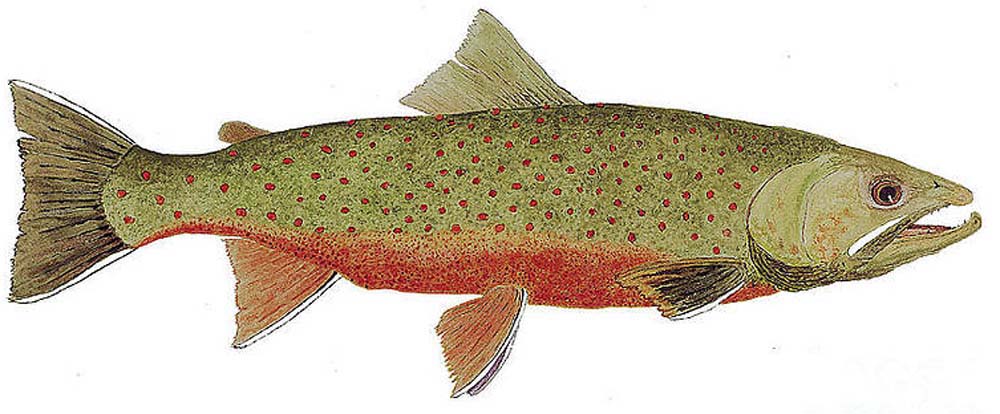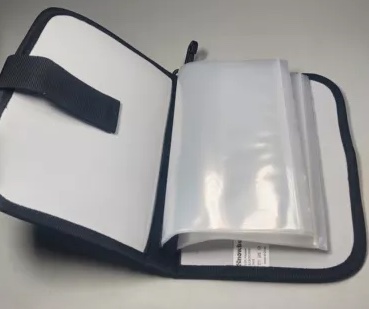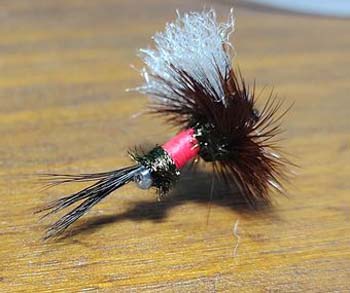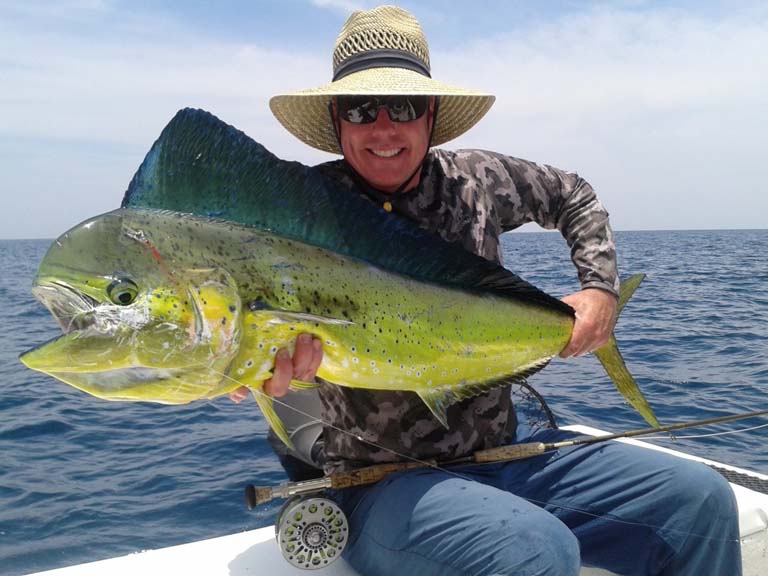
Captain Andrew Derr with a client’s nice striper.
A Woolly Bugger tube fly has never had a bad day
By Skip Clement
Over the years, better ideas about how to do fly fishing ‘things’ better have come and stayed and come and gone. For you, that means certain ‘things,’ and for others, something altogether different.
One such change that made fly fishing a better way to catch trout, salmon, bass, tarpon, and just about anything that swims is Russell Blessing’s fly his daughter named the Woolly Bugger. Launched in 1967, it has never had a restful day since.
Another fly or lure recorded 10,000 years ago is the tube fly, used by coastal-dwelling native Northwest Americans.

These were tied by Russell Blessing, inventor of the Woolly Bugger, and provided courtesy of Fred Blessing, his son.
The tube fly has better appeal than a hook-tied fly equivalent
Of course, that would not be relevant to tiny flies in the # high teens or worms, for example. The rest of the fly tying done on a hook is a provable disadvantage compared to tube-tied flies.
A hook-tied fly creates a leverage advantage for a trout, bonefish, musky, tarpon, or any fish, and a tube fly does not. The choice is obvious.
If a fly tied to a hook gets its point damaged, it could be useless and thus discarded. A tube fly, in contrast, only needs a new hook, not a new fly.

Study of a male Dolly Varden [char] by award-winning watercolorist Thom Glace. The Dolly Varden (Salvelinus malma) is native to cold-water tributaries of the Pacific Ocean in Asia and North America. It belongs to the genus Salvelinus, or true chars, which also includes the Brook, Lake, and Bull Trout, as well as Arctic Char.
Does converting to tube flies mean more money?
Other than a tube fly adapter (under $10) and the cost of tubes, tying any fly on a tube can be done without new skills or different materials or amounts.

Snowbee fly wallet. This wallet could crush flies unless they are just streamers, wet flies, or baitfish.
Storage – see images
In addition to the storage options [shown], cut a giant ‘smoothie’ straw (half-inch diameter) to a manageable or pocketable length. Then, burn one end closed using a BIC lighter while squeezing with needle-nose pliers. The open end can be closed and opened using Velcro. The straw can hold many more flies than expected. Each straw could have different sizes or colors, for example.
It’s not a good idea
Tube flies stored in fly wallets could become malformed—not a good option for some anglers. Storage boxes with so-called lure trays on one side and foam on the opposite holding loose hooks might be a better option. Also, and again, some deal with pocketed tube flies in zip-lock bags and leave slit-opened original hook packages kept in sandwich-size zip-lock bags.

This C&FDesigned fly box holds tube flies on rails on one side and hooks in foam on the other. A clear box would make for a better system—you could see into it. Also, a foam skin would let it float if dropped.
Some things to think about when pondering a better way and a more enjoyable way to fly fish
- You don’t need to leave the water to change anything if using tube flies.
- Your tube fly could last more than the season because it will probably slide up the leader when the fish shakes its head, preventing the fish from using the ‘fly’ as leverage.
- All the hoopla about junction tubing need not necessarily apply – just a tube and a hook.
- No unique knots are required when tying tube flies.
- The hook at the end of the tube fly can be any size and can be anchored with the hook pointing up or down.
How others see tube flies
Odd, but only the Europeans, especially Scandinavians, have embraced the improvement of using tube flies beyond swinging them for Atlantic salmon. They use flies for brown trout, grayling, pike, zander, and sea trout. Atlantic salmon are fished in Scandinavian countries almost exclusively using tube flies swung, riffling hitch, dry flies, and as wet flies.

Ruben Martin’s Tube Humpy.
Ruben Martin and Leandro Longobardi and their followers have moved forward in South America with tube flies.
In New Zealand, tube flies are just getting recognized for their advantages, not just offshore but also for their big rainbows and huge browns.
In Canada, tube flies are popular on both coasts, mainly steelhead trout and Pacific salmon out west. On the east coast, the Maritimes for Atlantic salmon – including Quebec and the Great Lakes for steelhead and non-native salmon.
What about the US?
In the US, tube flies are popular angling for West Coast steelhead and Pacific salmon. The Great Lakes have their share of tube fly anglers, and the minuscule Atlantic salmon runs in Maine have a cadre of tube fly adherents.
Small communities of awareness regarding tube flies are spotted throughout the US, but more interest is needed to find tube flies for sale in fly shop fly bins.
Ask a big-box store fly shop manager about tube flies; usually, a ‘he’ pronoun person will ask you to repeat the question. Then say, ‘What are tube flies?’
In Alaska, tube flies and switch rods are the thing, but bring your own. Fly shops are principally in Anchorage.
In Florida, almost everyone knows what tube flies are. Still, they are only familiar with the small pool of mostly bill fishers who use tube flies to chase marlin and sailfish in the Latin American coastal waters.

Dolphin of a fly, offshore with Capt. Scott Hamilton [Fly Fishing Extremes], Hamilton Photo.






